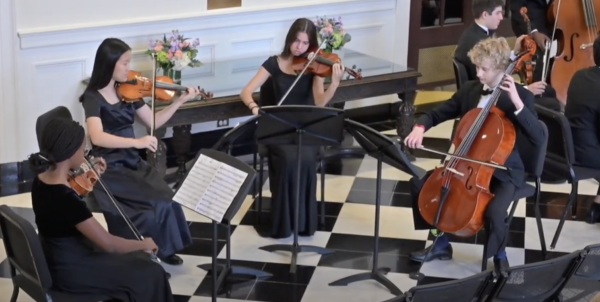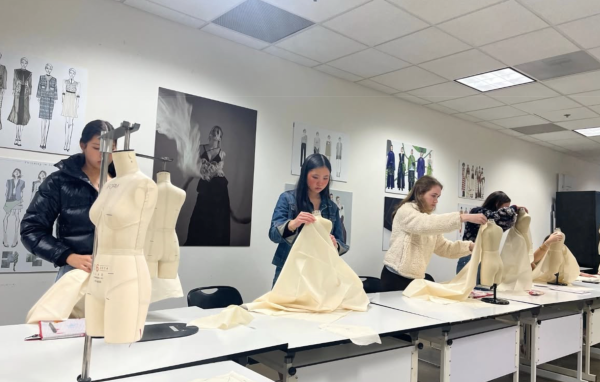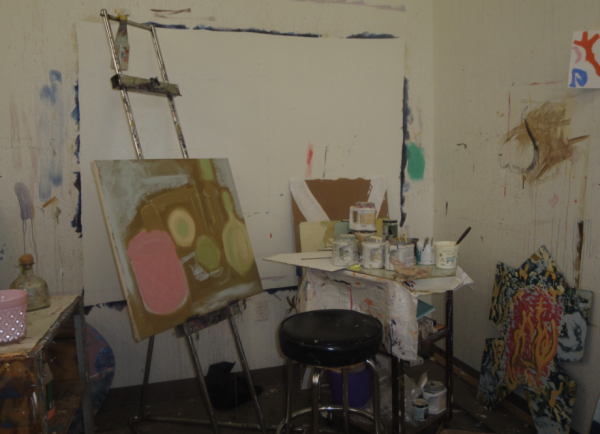Westminster players prepare for spring production of Romeo and Juliet
During the past few months, the Westminster players embarked on a journey in bringing to life one of the most esteemed theatrical productions in history, Romeo and Juliet. Traditionally set in the medieval town of Verona, the renowned Shakespeare play continues to enthrall literary experts and thespians alike because of its universal themes and timeless renditions. However, the Westminster thespians decided to diverge from the traditional medieval approach to the play and instead reinvent the story to take place during one of the most culturally rich and economically prosperous periods of Western society: the Roaring Twenties.
The inventive idea of setting the classic love story during the 1920’s came into fruition under the direction of upper school English teacher Maggie Bailey and sophomore Katie Kronauge. Additionally, the cast rendered support from producer and middle school performing arts teacher Jennifer Finlayson.
“I have had the idea of setting Romeo and Juliet in the 1920’s on my mind for a while,” said Bailey. “Shakespeare, especially Romeo and Juliet, is very much my first love and a great way to work with students on language. Pairing up such a classic play with a completely different cultural perspective seemed exciting.” Many of Bailey’s interpretations of the 1920’s come from her knowledge of teaching The Great Gatsby by F. Scott Fitzgerald.
In addition to working with the talented production team, the cast also had the opportunity to collaborate with junior Schyler Rowland, who adopted the role of dramaturge for the play. A dramaturge is a literary expert and advisor who provides artistic insight to a theatrical production.
“My job as dramaturge for this play is to help the actors to understand what they are saying since Shakespeare is hard to understand, and also to help them understand the historical context of the 1920’s,” said Rowland. “A lot of my inspiration has come from The Great Gatsby, and I also wanted to make sure to include important 1920’s cultural phenomena like speakeasys, flappers, and prohibition. I have been doing a lot of research to make sure that the 1920’s themes come through for both the directors and the actors.” With the stylistic element of the 1920’s and guidance from the leadership team, the cast hopes to bring renewed passion and depth to the sixteenth century play.
“I’m hoping that this version of Romeo and Juliet broadens the audience’s horizons for what Shakespeare’s plays are like and that our production shows that there is more to Shakespeare than old men in Elizabethan outfits speaking a language that no one can understand,” said Rowland. While Rowland spent hours developing a historically accurate setting for this unique rendition of Romeo and Juliet, she also developed original music for the play.
“Writing music for this play and incorporating sound effects has been a really cool opportunity for me,” said Rowland, who is also a member of the Westminster Orchestra. While the production ran Feb. 22 and Feb. 23, the talented cast of Romeo and Juliet began preparations for the play weeks before winter break.
“What we do during rehearsal varies each day, especially as we approach the show,” said sophomore Max Norman, who portrayed Tybalt in the production. “One day we might do a full run of the show, while the next day we look into parts of the play that people have trouble with. We alternate back and forth between these options.” On an average day, rehearsal for the play lasts between three and four hours. Running a successful rehearsal would not be possible without the direction and leadership of Bailey, Kronauge, and Finlayson, the production team for the play.
“As a student director, a big part of my job has been to stage the show,” said Kronauge. “I tell the actors where they are supposed to move across the stage, with direction from Mrs. Bailey. I also help backstage with the tech crew.” Kronauge is well-respected as the student director of Romeo and Juliet and contributed greatly to the cast’s success in preparing for the production.
“Kronauge has a real gift for blocking, which is the ability to physically envision how the play will take shape: who’s standing where, where each character will enter onto the stage, when actors will turn away, and other movements like that,” said Bailey. While the cast has seen great success and growth throughout their preparations for the spring production, they also experienced some setbacks and challenges.
“One of the biggest issues that we have encountered is learning lines quickly in a version of English that is so challenging to understand,” said Norman. “In order to effectively help the audience to understand the play and obtain some kind of cross interaction with the cast, we really need to know what we are saying as the actors.” Nonetheless, with countless hours of rehearsals and guidance from the directors and dramaturge, the student actors in Romeo and Juliet developed an incredible rendition of the timeless Shakespeare play.
“I always tell people that if you are feeling bad about the way the world is right now, go to a high school theater production,” said Bailey. “There is always so much passion, support, and an immense depth of talent within each cast. It makes me feel good about the future.”



